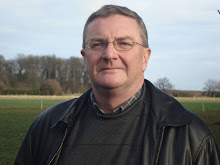
The principal reason for our recent visit to Syria was for me to finally achieve my ambition of visiting Krak des Chevaliers, the greatest crusader castle and reputedly the inspiration for the design of Edward I's concentric castles in North Wales. Lawrence of Arabia, another Jesus College alumnus, called it 'perhaps the best preserved and wholly admirable castle in the world', and Krak certainly didn't disappoint. The photos I'd seen had led me to expect a fortress upon a bluff in the middle of a level desert; in fact, it stands on a dizzying hill top, dominating the only route through the mountains from the Syrian heartland to the sea. The scale of the citadel is simply breathtaking, but then, it needed to be huge: in its heyday in the twelfth and thirteenth centuries, Krak des Chevaliers was the headquarters of some two thousand Knights Hospitaller and their attendant footsoldiers, who needed a literally cavernous living space, the Hall of the Knights (complete with a long row of cosily sociable latrines), vast stables for the four hundred or so horses, and the largest oven I've ever seen in any of the many hundreds of castles that I've visited. But there were delicate touches too, notably the stunning Gothic loggia and the lovely chapel - the latter was converted into a mosque after Krak fell to the Mamluks in 1271, having previously resisted sieges by both Nur ad-Din and Saladin (whose tomb we visited in Damascus).



One of the best or worst things about Krak, depending on one's point of view, is the complete absence of 'elf 'n' safety' (indeed, Syria as a whole is a land where the entire brigade of H&S jobsworths should be sent en masse to suffer a communal nervous breakdown). Vast holes in the ground are completely unfenced; uneven, unlit surfaces abound; the wall walk, with dizzying drops on both sides, has no parapets, so vertigo sufferers should stay well clear of the edges. The castle has apparently banned school parties but seems perfectly content to allow families and adults of varying degrees of responsibility to do what they please. But then, this is small beer in a country where the driving makes Cairo look like a haven of careful motorists and crossing the road is literally a life-and-death experience: maybe this is partly a consequence of the confusion inherent in road signs like the one I spotted near Damascus, 'Make light speed - place full of inhabitants'.

Pictures, from top: the inner curtain wall and moat; left, the Mamluk baths (aka an unfenced hole); right, the Gothic loggia; the chapel/mosque; the Hall of the Knights; the view from the parapets.











No comments:
Post a Comment